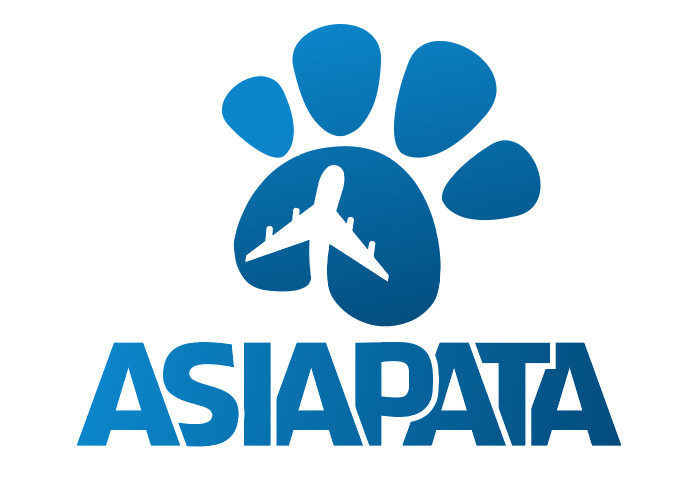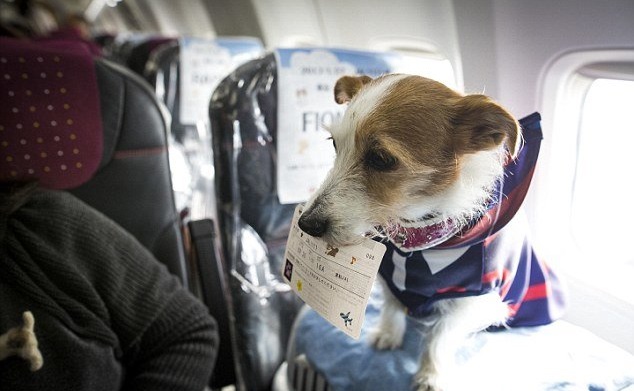Pet Safety During Transit (Layover) – What Should You Do?
When traveling internationally with your pet, especially by air, one of the most stressful moments for both the owner and the animal is the transit or layover period. Whether your pet is flying with you or as cargo, layovers can be confusing, long, and risky if not handled correctly. Ensuring pet safety during transit is crucial to avoid stress, dehydration, or even loss of your beloved companion.
In this article, we’ll explain how pet transit works, what risks may occur, and what you can do to make sure your pet stays safe and comfortable during the entire journey.
1. Understanding Pet Transit and Layovers

A transit or layover occurs when a flight connects through another airport before reaching the final destination. For humans, it’s often just a waiting period in an airport lounge — but for pets, it can be a complex process.
Depending on the airline and the destination country, pets may:
-
Stay in a special transit area within the airport.
-
Be transferred between aircraft by ground staff.
-
Be checked into an animal holding facility for longer layovers.
Each of these steps involves handling, environmental changes, and potential stress for your pet. That’s why proper preparation and communication with your airline or pet transport company are vital.
2. Common Risks During Pet Transit
Understanding potential problems can help you prevent them. Here are the most common risks pets face during layovers:
2.1. Heat or Cold Stress
Extreme temperatures in the cargo area or during loading and unloading can cause heatstroke or hypothermia, especially in short-nosed breeds like Bulldogs, Pugs, or Persian cats.
Many airlines have seasonal restrictions to avoid flying these breeds during summer or winter — for good reason.
2.2. Dehydration
During long layovers, pets may not have access to water. Without proper hydration, animals can quickly become weak, lethargic, or overheated.
That’s why attaching a spill-proof water bottle and notifying the airline staff about refill needs is critical.
2.3. Prolonged Stress and Anxiety
The noise, unfamiliar smells, and long waiting hours can trigger anxiety or panic in pets. Some animals may scratch the crate, injure themselves, or even escape if the kennel is not securely locked.
2.4. Mishandling or Lost Pets
In rare but serious cases, pets have been misrouted or lost during transit due to human error. This happens when handling teams fail to correctly transfer the animal to the next flight.
Working with a trusted pet transport company significantly reduces this risk.
2.5. Health Emergencies
If your pet is already nervous or has underlying health issues, the stress of layovers could cause breathing problems, vomiting, or even cardiac distress. This is why a pre-travel veterinary check is mandatory before any international journey.
3. Preparing Your Pet for a Safe Layover
3.1. Choose the Right Airline
Not all airlines have equal standards for pet handling. Choose an airline that:
-
Has a dedicated live animal transport policy.
-
Offers climate-controlled holding areas during layovers.
-
Provides real-time tracking of your pet’s journey.
Airlines like Lufthansa, KLM, and Qatar Airways are known for their pet-friendly transit services with special animal lounges at major hubs.
3.2. Plan Direct Routes When Possible
If you can, book a direct flight.
Every additional layover increases handling time and stress. However, if a transit is unavoidable, make sure it occurs in pet-safe airports (for example, Amsterdam, Frankfurt, or Doha, which have certified animal care centers).
3.3. Prepare a Proper Travel Crate
Your pet’s crate is its safe zone throughout the journey. Follow IATA (International Air Transport Association) standards:
-
The crate should be large enough for the pet to stand, turn, and lie down comfortably.
-
It must have metal bolts, secure doors, and air ventilation on all sides.
-
Label the crate with:
-
Pet’s name
-
Owner’s name and phone number
-
Destination and flight number
-
“LIVE ANIMAL” stickers in large print
-
Also, attach a small pouch with feeding instructions and any required medication.
3.4. Include Comfort Items
Placing a familiar blanket, towel, or small toy inside the crate helps reduce anxiety. Avoid bulky items that could block ventilation or cause injury.
3.5. Feed and Hydrate Properly
Do not feed your pet a heavy meal 4–6 hours before departure to prevent nausea.
Provide water up until check-in and attach a refillable water dish inside the crate.
If the layover exceeds 8 hours, check if the airline’s animal facility can feed or hydrate your pet during transit.
4. What Happens During a Layover (Step-by-Step)

Understanding what happens behind the scenes can help calm your worries.
-
Arrival at the transit airport:
Once your pet’s flight lands, ground staff unload the crate carefully and take it to a designated live animal area. -
Inspection and resting period:
Trained staff at the animal facility check the pet’s condition — ensuring it’s breathing well, not overheated, and secure in the crate. -
Hydration and care (if needed):
For layovers longer than 4 hours, pets are often given fresh water or a light snack, especially if the owner has provided specific instructions. -
Transfer to the next flight:
Before boarding, the crate is scanned, verified, and loaded onto the next aircraft. All paperwork (health certificate, customs forms, etc.) is reviewed. -
Monitoring until final destination:
Some airports, like Amsterdam Schiphol’s Animal Hotel, provide climate-controlled rest areas where pets can stretch, rest, and recover before continuing their journey.
5. What You Can Do as the Owner
5.1. Confirm Transit Rules in Advance
Each country and airline has unique policies for pets in transit. For instance:
-
Some airports do not allow pets to remain overnight without prior booking.
-
Certain countries require additional health checks even for transiting animals.
Always confirm these details before booking to avoid last-minute problems.
5.2. Keep All Documents Ready
During international pet transit, you’ll need:
-
Pet passport (if applicable)
-
Health certificate from a licensed vet
-
Rabies vaccination record
-
Import/export permit (for destination country)
Keep copies both in your hand luggage and attached to the crate.
5.3. Avoid Sedatives Unless Approved by a Vet
Sedation may seem like an easy solution to calm your pet, but it can lower blood pressure and impair breathing, especially in high altitude or temperature changes.
Only use sedatives if prescribed by your veterinarian and noted on the pet’s travel documents.
5.4. Track Your Pet’s Flight
Many airlines provide tracking codes or apps where you can see when your pet boards, lands, or transfers.
If using a private pet relocation service, ask for photo or video updates during long layovers.
5.5. Be Available and Stay Informed
Always remain reachable by phone or email throughout the journey.
If there’s an unexpected delay or route change, airline staff or pet handlers can contact you immediately.
6. After the Layover – Checking Your Pet’s Condition
Once your pet arrives at the final destination, check for:
-
Breathing irregularities
-
Signs of dehydration (dry nose, pale gums)
-
Any wounds or bruises
-
Unusual behavior such as trembling or refusal to eat
If you notice anything abnormal, visit a veterinarian immediately.
Most pets recover quickly after a long trip, but early attention can prevent complications.
7. Key Takeaways for Pet Safety During Transit
| Issue | Prevention |
|---|---|
| Heat or cold stress | Avoid extreme seasons; use airlines with climate-controlled animal areas |
| Dehydration | Attach a water dish; request staff to refill during long layovers |
| Mishandling | Choose experienced airlines or certified pet transport companies |
| Anxiety and stress | Familiarize your pet with its crate weeks before departure |
| Lost pets | Label the crate clearly and keep updated contact details visible |
8. Final Thoughts
Flying with pets is a big responsibility. While airlines and animal facilities have improved their standards, pet safety during transit still depends greatly on how well you prepare.
By understanding the process, choosing the right airline, and organizing documents and equipment carefully, you can ensure your furry friend travels comfortably, securely, and arrives happy at the destination.
Remember — to your pet, this isn’t just a flight; it’s a huge emotional and physical challenge.
Your preparation, love, and attention are what make the difference between a stressful journey and a safe adventure.
Read more:

